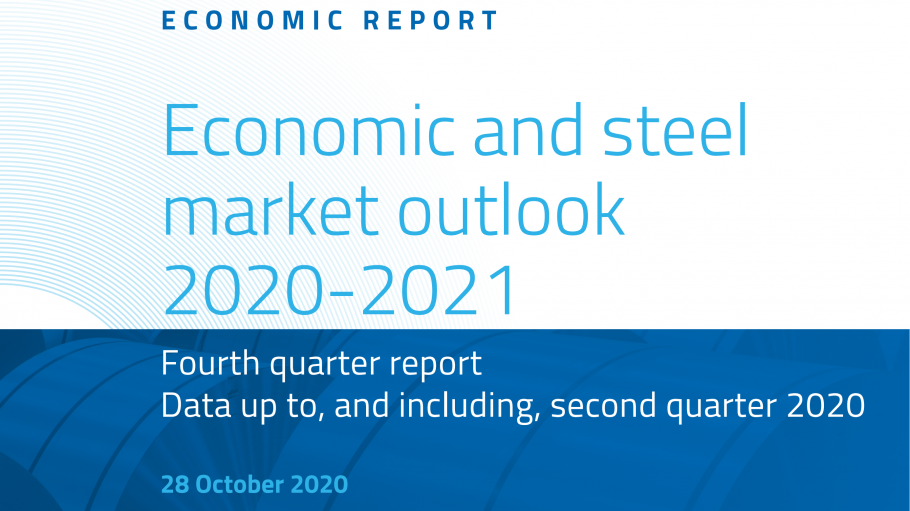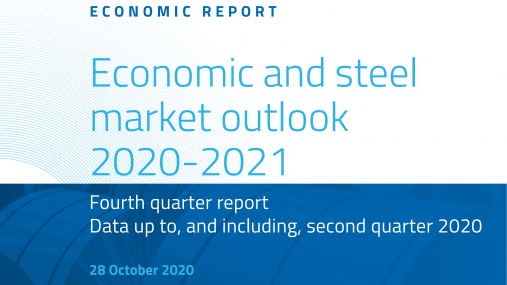
Publications » Economic and market outlook » Economic and steel market outlook 2020-2021, fourth quarter
Economic and steel market outlook 2020-2021, fourth quarter
Downloads and links
Recent updates

The COVID-19 pandemic continues to rage across Europe, with all steel-using sectors being affected. Apparent steel consumption in the EU fell (-25.5%) year-on-year in the second quarter of 2020, after a drop (-12%) in the first quarter. This was the most severe drop in EU steel consumption ever recorded.
The exceptionally negative trend in steel demand seen in the second quarter of 2020 is – as widely expected – the result of the economic and industrial lockdown in response to the Covid-19 pandemic.
Industrial activity restarted over the third quarter – when government COVID measures were largely lifted. Figures for the period will likely show a considerable rebound in GDP as well in industrial production, compared to record lows observed in the second quarter. This brief recovery may now be at risk if there is a COVID-induced ‘double-dip’ recession.
The unprecedented nature and evolution of this crisis means uncertainty and volatility surrounding possible developments in the coming months is still high. The outlook for this year and for 2021 remains very uncertain, given that COVID-measures are now being reimposed across the EU.
Total output in steel-using sectors fell (-21.3%) in the second quarter of 2020 after falling (-6.5%) in the first quarter.

Download this publication or visit associated links
Strasbourg, 17 December 2025 – The European Commission’s latest proposals on the Carbon Border Adjustment Mechanism (CBAM), unveiled today, correctly identify several loopholes that risk undermining its effectiveness, notably regarding EU exports, downstream sectors and circumvention practices. However, despite these laudable efforts, the measures put forward fail to deliver a comprehensive and durable response to carbon and jobs leakage, warns the European Steel Association (EUROFER).
A milestone occasion to quickly and effectively restore affordable electricity, to relaunch the
decarbonization and strengthen the international competitiveness of the European steel
industry.
Brussels, 02 December 2025 – Unchanged negative conditions – U.S. tariffs and trade disruptions, economic and geopolitical tensions, protracted weak demand and still high energy prices – continue to weigh on the European steel market. EUROFER’s latest Economic and Steel Market Outlook confirms for 2025 another recession in both apparent steel consumption (-0.2%, unchanged) and steel-using sectors (-0.5%, revised from -0.7%). A potential recovery is expected only in 2026 for the Steel Weighted Industrial Production index (SWIP) (+1.8%, stable) and for apparent steel consumption (+3%, slightly revised from +3.1%) – although consumption volumes would still remain well below pre-pandemic levels. Steel imports retained historically high shares (27%), while exports plummeted (-9%) in the first eight months of 2025.